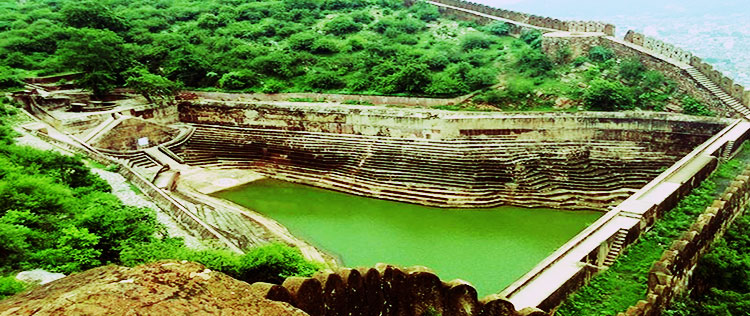Nahargarh: The Fort Offering Panoramic View of The City
Among the three major forts: Amber, Jaigarh and Nahragarh the Nahargarh held a distinct value due to its sky-kissing height and fortifications. It was built in 1734 by the founder of Jaipur Mahraja Sawai Jai Singh. The two forts were already situated at the key positions namely Jaigarh and Amber. This was the third location that was of vital importance due to its proximity to hills and the extraordinary height.
Why was it built?
Nahargarh fort was once used by the mighty king of Jaipur to have a bird's eye view of the city and keep an eye on intruders. One of the major objectives of this fort was to have a bird's eye view of the whole city. Even today when we stand at the terrace we can see a very large part of the city. But that era was different. The Jaipur was a planned city, it was not heavily populated and there was a properly organized structure that allowed the unrestricted views. The fort was strategically planned and built to foil enemy’s endeavors. However, due to the amicable relations of Rajputs with Mughals and later on with Britons the fort never came under attack.
When did it get the present form?
However the fort got its present form during the extension program that started in 1868. Some major architectural events took place towards the end of 19th century. During that period starting from 1882 various magnificent palaces were built in the complex of the fort. These palaces were built by Mahraja Sawai Madho Singh and it would be surprising to know that all these magnificent palaces cost of Rs.3.50 lakhs. Among them a special mention goes to Madhavendra Bhavan. This palace had various suites especially for the queens and above there was a suite made exclusively for the king. Most o the rooms are deftly linked by corridors and one can still see some delicate frescos adorning them. As late as 1944 the state government used the fort firing the guns as a signal
Is there anything special about the fort?
The fort is a mute witness to many historical events of the past. It was here that the treaties with Maratha forces were signed.
The place again came under the news during the Indian Mutiny of 1857. There were many Europeans living in the Jaipur area and the mutiny had country wide impact that endangered the lives and safety of Europeans. So the Rajput ruler Sawai Ram Singh transferred the Europeans to Nahargarh fort to ensure their safety. Apart from other people the British Resident's wife was also given shelter in Nahargarh fort.
What about the architectures?
The fort beautifully blends different schools of architecture. When it started it had a distinct Rajput architecture characterized by red sandstone and sturdy walls. When several palaces were added the Mughal architecture influenced the work of architects. The later renovations and additions that were made during British era, they were greatly inspired by European style.
The king Sawai Madho Singh had 12 queens and the Madhavendra Bhwan was built to offer the queens separate suite for their residence. The palace is further divided into 9 apartments and each apartment is a complete structure in itself quipped with areas like lobby, bedrooms, store, kitchen and toilet. It was once used by the royal womenfolk to walk for leisure activities. The fortress was also used to protect the riche of the state till 1940 when Maharaja Man Singh II moved the treasure to Moti Dungri/ One can see have eye caressing scenes of Man Sagar Lake form the fort.
Another place that attracts the eye is Diwan I aam a large hall where the King use to hear the complaints of common masses.
What is the connection between Nahargaarh and animals?
The Nahargarh of the modern era also has one more attraction that instantly impacts the attention of the visitor. It is Nahargarh sanctuary. Thus sanctuary spread in an area of 50 Km sq, has a wide variety of flora and fauna. It also has some exquisite rocks in the form of fine granite and quartzite rocks.
How to Reach
From Airport
- Distance from airport is 14.5 km via Jawahar Lal Naharu Marg (JLN Marg).
- Cab or auto will take around 35-40 min to reach Nahargarh.
- Charges for one side is approx. for auto Rs 200-220 Indian rupee.
- Charges for one side is approx. for cab Rs 220-250 Indian rupee.
From Railway Station
- Distance from railway station is 6 km (via Shiv Marg).
- Cab or auto will take around 20-25 min to reach Nahargarh.
- Charges for one side is approx. for auto Rs 100-120 Indian rupee.
- Charges for one side is approx. for cab Rs 120-150 Indian rupee.
Parking Information
- Parking available
- Charges – 20 to 30 Indian rupee per bike or car
- Contact info - 1415134038












